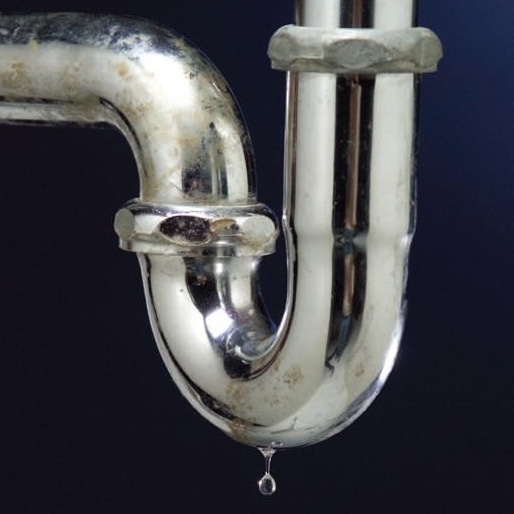Finding Small Leaks Beneath the Sink
Drain leak
That tiny leak beneath the sink in the kitchen or bathroom vanity can quietly grow, damaging the flooring and cabinets. It can even damage the ceiling and walls if the leak starts in an upstairs bathroom. The only way to prevent extensive damage as the result of a small leak is to find it early.
Because the plumbing for sinks is usually hidden, it can be a long time before anyone notices leaks. By then, it could do considerable damage. For this reason, we heartily encourage our customers to check the area beneath their sinks on a regular basis for leaks.
Why is this wet/damaged?
We often use the area beneath our sinks as a place to store our trash receptacle or store cleaning products. It may well be that your first sign of trouble is when you discover one of these is wet.
Other signs of a leak are damage in the cabinet beneath the leak, loose or lifting flooring in front of the sink or vanity, a musty smell, or ‘lifting’ or other damage to a countertop around the fixtures.
There are two kinds of leaks beneath a sink: a supply line leak or a drain leak.
Supply line leak
Supply leak
To find a supply line leak, it’s a simple matter of repeatedly pressing and checking a clean tissue against the shutoff valve and connections until the tissue comes away damp. By tracing the wet spot to the highest level, you can probably find out exactly where the leak originates. Sometimes, a corroded valve or pipe will show you exactly where the leak started. If you have a dishwasher, you may have to run that to discover if that is the source of your problem.
If it’s the supply valve, I might try tightening the packing nut. If that doesn’t work, the valve needs to be replaced.
If it’s a connection, the compression nut might need to be tightened, or disassembled and reassembled after applying some Teflon joint compound.
Drain leaks
To find a drain leak, fill the sink bowl with water. Press the tissue against each fitting and connection as the water drains out until you locate the source. Again, if you have a dishwasher, you’ll have to test that, as well.
Either type of leak causes damage.
The ring nut for the basket strainer might be loose, which would cause a drain leak. Or, the plumber’s putty might need to be replaced.
If it’s a slip joint, that slip joint nut might need to be tightened.
Who will repair it?
Some of our customers have some handy skills and will want to fix the small stuff themselves. That’s okay: we’ll always be there when you call us for the big things. Other customers don’t have the tools or skill to do their own repairs, are busy or have concerns about making it worse, and if you’re one of those, you can call us for any plumbing problem or repair, and we’ll be happy to help.
We have both types of customers and are glad for all of them.
911 Heating, Cooling & Plumbing provides quality residential plumbing, commercial plumbing, sink drains and sewers, slab leak detection and repair, and water heater repair and replacement services to Phoenix, AZ, residents at affordable prices. Contact us at 602-795-2900 for all your plumbing needs.



